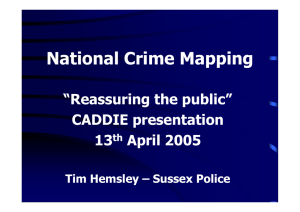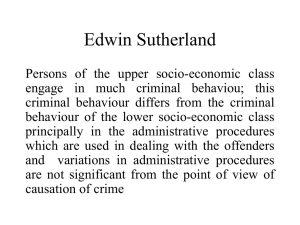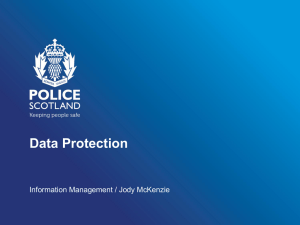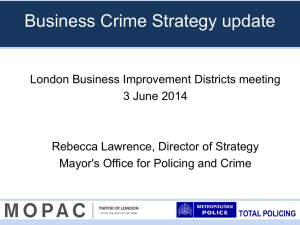here! - sellen
advertisement
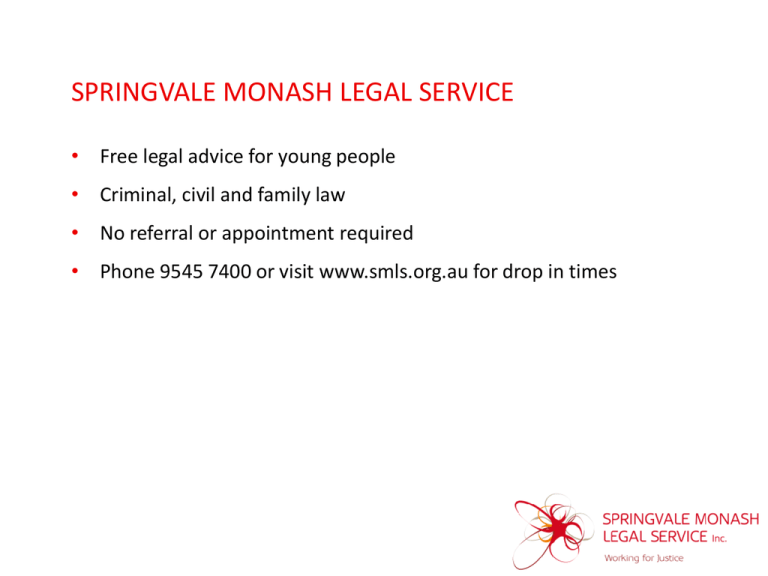
SPRINGVALE MONASH LEGAL SERVICE • Free legal advice for young people • Criminal, civil and family law • No referral or appointment required • Phone 9545 7400 or visit www.smls.org.au for drop in times The news media over-represents youth crime. Department of Health, 2004: “In a recent study Howard Sercombe examined the print media's portrayal of young people. He found that in approximately 2,500 newspaper articles related to young people, 64 per cent were about juvenile crime. In articles related to young Aboriginal people, 83 per cent were about crime (Sercombe, 2001).” Young people generally commit non-violent offences. Sentencing Advisory Council, 2012: “From 2000-2009, transit offences accounted for 34.1% of all principal proven offences dealt with by the court, followed by property offences at 32.1%. Offences against the person accounted for 17% of all principal proven offences. Only a very small proportion of these were offences involving serious injury to the victim.” Public perceptions of young people drive tougher legislative and policing responses. Youth Affairs Council of Victoria, 2003: “The association between young people and crime can significantly influence the way young people are perceived by the wider community and their ability to access public space. For example, community consultations in metro Melbourne found that the presence of young people, especially in groups, made many people feel unsafe in the city. Research suggests that the presence of young people in public space is often construed as dangerous and disruptive and as a result there has been increasing control and surveillance of young people who 'hang out' in public space.” The introduction of new graffiti related offences in 2007 increased police attention on young people. Victoria Police Crime Statistics, 2000-2012: Year 2000/01 2001/02 2002/03 2003/04 2004/05 2005/06 2006/07 2007/08 2008/09 2009/10 2010/11 2011/12 Damage / Deface by Graffiti (Existing Offence) 18 14 29 22 14 17 89 37 63 83 131 120 Mark Graffiti Without Consent (New Offence) 1,460 2,223 3,286 3,213 Research shows that ‘move-on’ laws disproportionately impact young people. New South Wales Ombudsman, 1999: • 16 year olds are 9 times more likely to be moved on than 26 year olds and 19 times more likely to be moved on than 36 year olds • 17 year olds accounted for 22% of crime against the person but 54% of directions to move on • Approximately 50% of directions to move on were issued without a valid reason New weapons related offences and search powers were not supported by an increase in knife crime. Victoria Police Crime Statistics, 2000-2010: Year 2000/01 2001/02 2002/03 2003/04 2004/05 2005/06 2006/07 2007/08 2008/09 2009/10 Knives Used / Threatened / Displayed Robbery Assault Aggravated Burglary 1379 1138 922 756 505 620 648 677 752 612 1056 1418 1361 1362 1207 1089 1162 1119 1087 1065 145 102 65 71 47 65 58 54 72 82 The introduction of PSOs at train stations is not an evidence-based approach. Victoria Police Crime Statistics, 2012/2013: • 37.3% of crime happened at residential locations • 2.4% of crime happened at public transport locations Youthlaw Community Legal Centre, 2013: • PSOs are harassing young people including those with an intellectual disability • Fines issued by PSOs are being dismissed by the court due to a lack of evidence • There has been a concerning increase in allegations of unfair treatment by PSOs Policing responses can negatively impact young people and escalate police/youth conflict. Smart Justice for Young People, 2013: • Young people do not draw a distinction between ‘public contact’ and ‘field contact’ • Young African men were 2.4 times more likely to be stopped by police than non-Africans • African young people are less likely to receive a reason for being stopped or searched The Australian Institute of Criminology argues that labelling young people as criminals produces a self-fulfilling prophesy. Education and support services for young people at risk would be a better investment than the introduction and policing of laws that do not result in crime reduction.


